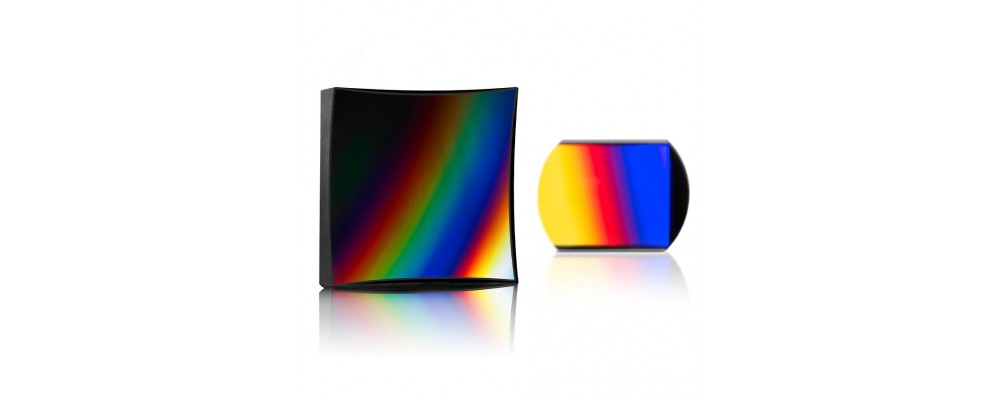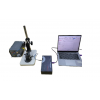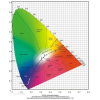Your shopping cart is empty!
Fundamentals of Grating Knowledge Sharing
This article outlines the principles, types, and key parameters of gratings, including transmission, reflection, and blazed types. Optosky’s ATP series spectrometers, designed with advanced grating technologies, support applications in research, industry, and environmental monitoring. Key parameters like dispersion, resolving power, and diffraction efficiency determine grating performance.
Fundamentals of Grating Knowledge Sharing
A grating is an optical element composed of numerous equally spaced, parallel slits, typically used for spectrographic dispersion and light separation. It utilizes the principle of light diffraction to perform this function and is therefore often referred to as a diffraction grating.
Figure 1. Construction of the Fiber Optic Spectrometer
As shown in the figure, the grating is one of the core components in a fiber optic spectrometer, determining the spectrometer's wavelength range and resolution. Additionally, the sensitivity of the spectrometer is largely influenced by the grating parameters. Selecting the appropriate grating is crucial for different spectral applications, which requires a basic understanding of gratings. This issue provides a brief introduction to fundamental knowledge related to gratings.Part.01 Grating Spectroscopy Principle

Figure 2. Grating constant

Figure 3. Transmission grating diffraction principle
In the case of oblique incidence in the above figure, the grating equation can be expressed as:

In the above equation, d=a+b represents the grating constant. The smaller the value of d, the better the grating performance. ϕ is the angle of oblique incidence, θ is the diffraction angle, and m is the order of the spectral bright fringe.
According to the grating equation, for the same spectral order m, when a mixture of different wavelengths enters at the same angle ϕ, the positions of the bright fringes (interference maxima) corresponding to different wavelengths λ are different. The diffraction angle θ is determined by the wavelength λ , meaning that light of different wavelengths exits at different diffraction angles. For a given grating, the bright fringes of different wavelengths at the same order are separated and arranged in order of wavelength, forming a series of discrete spectral lines, which is the principle of diffraction grating.

Figure 4. Schematic Diagram of Grating Dispersion
Based on this principle, gratings are widely used as dispersion elements in the optical paths of monochromators or spectrometers.
Part 02: Types of Gratings
For various dispersion systems, the type of grating used varies depending on the application scenario. Below are some common types of gratings:

According to the working mechanism, gratings can be divided into transmission gratings and reflection gratings.

Figure 5. Concave Reflection Grating
A transmission grating is typically fabricated by etching numerous parallel, equally spaced, and equally wide slits onto a transparent substrate (such as glass). Using the principle of multi-slit diffraction, the polychromatic light is dispersed.
A reflection grating, on the other hand, is created by coating a high-reflectivity metal substrate with a metallic film and etching a series of lines onto the mirror-like metal surface. This causes the incident white light to reflect and disperse. Based on the shape, reflection gratings can be further divided into plane reflection gratings and concave (reflection) gratings.
According to the modulation effect on incident light, gratings can be subdivided into amplitude gratings and phase gratings:
· Amplitude gratings modulate light primarily by altering the amplitude of the incident light;
· Phase gratings modulate light by changing the phase of the incident light.

Figure 6. Structure of Blazed Reflection Grating
A blazed grating, also known as a staircase grating, is designed with a saw tooth profile that concentrates the energy of transmitted or reflected light into a specific direction, determined by the blaze angle, focusing the energy on a specific spectral order. In a typical grating, most energy is concentrated in the zero-order spectrum, while a blazed grating shifts the central maximum from the zero-order to a specific diffracted order, corresponding to the blaze wavelength. This means blazed gratings achieve high efficiency at their designated wavelength.
A ruled grating is made by mechanically cutting lines onto a metal-coated surface using a diamond tool. The groove density is generally less than 1800 grooves/mm, providing broad spectral coverage. When the spectral range exceeds 1500 nm, ruled gratings are typically used.
A holographic surface grating is created by exposing a photosensitive material to the interference of two laser beams, forming periodic interference patterns that can be processed into a sinusoidal shape on the surface. These gratings can have a higher groove density, making them suitable for high-resolution applications. Compared to blazed gratings, holographic gratings have lower stray light and introduce fewer errors, although their diffraction efficiency is lower, making them commonly used in Raman and fluorescence spectroscopy.
Plasma-etched gratings are based on holographic gratings, where plasma etching is used to create the blaze angle. These gratings combine high diffraction efficiency with low stray light, covering a spectral range from UV to near-infrared.
Part 03: Grating Parameters
Grating parameters are key indicators of grating performance and cover several aspects. Below are the primary grating parameters:
1. Dispersion: Dispersion refers to the ability of a grating to separate light of different wavelengths, typically expressed as the dispersion rate, defined as dθ/dλ.
2. Spectral resolving power: Due to the finite width of interference fringes, closely spaced wavelengths can overlap, making them indistinguishable. The spectral resolving power of a grating is defined as λ/Δλ.
3. Diffraction efficiency: This refers to the ability of a grating to convert incident light into diffracted light and is closely related to the grating's design and material properties. It is the ratio of monochromatic light diffracted into a given order to the incident monochromatic light and significantly impacts the sensitivity of a spectrometer.
4. Diffraction angle: The diffraction angle is the angular difference between adjacent slits in a grating and can be derived from the grating equation.
5. Groove density: This refers to the number of grooves per unit length and influences both the grating’s resolution and dispersion capability. A higher groove density results in greater dispersion and higher resolution.
6. Groove shape, width, and deviation: These parameters define the geometric structure of the grating and affect its optical performance.
7. Central wavelength: For Bragg gratings, the central wavelength is the peak position of the reflection spectrum and is one of its most important characteristics. For blazed gratings, the peak position corresponds to the blaze wavelength.
8. Refractive index modulation: This indicates the extent of refractive index variation and is often used to describe the depth of refractive index modulation in fiber gratings.
9. Grating period: The distance between adjacent grooves, which is a key factor in determining the grating's performance.
10. Vector tilt angle: In some applications, such as holographic plane gratings, the vector tilt angle can influence the output performance of the grating.
11. Grating thickness: For some specialized gratings, such as holographic gratings, grating thickness is also an important design parameter.
Part 04: Conclusion
The above summarizes the basic principles and an introduction to gratings. Based on the characteristics of different types of gratings, Optosky has developed the ATP series of fiber-optic spectrometers, leveraging long-term technical expertise in grating and spectral analysis technologies. The grating types include blazed gratings, transmission gratings, and reflection gratings (concave and plane), with a full range of models covering the ultraviolet-visible-near-infrared spectrum. These products support applications ranging from scientific research to industrial production, environmental monitoring, and materials analysis.
According to your application needs, you can select the appropriate grating spectral range, blaze wavelength, grating resolution (groove density), and diffraction efficiency. Optosky is dedicated to providing you with the most effective spectrometers to support your research and production!
Search
Categories
Popular Posts
Latest Posts





















Comments: 0
No comments